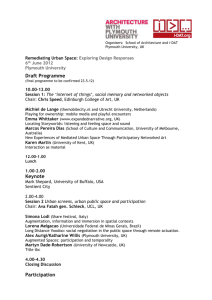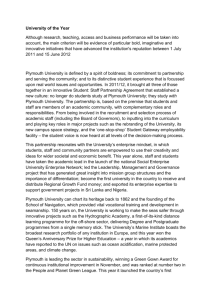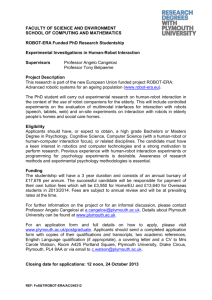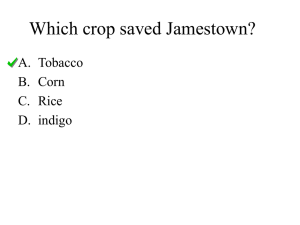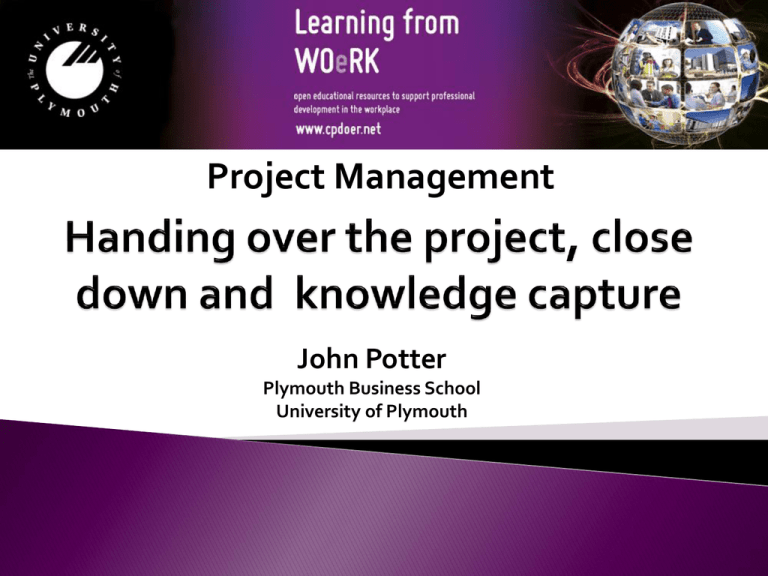
Project Management
John Potter
Plymouth Business School
University of Plymouth
Handing over and winding up
the project
• Even when the project appears to be completed there might
be as much as 25% of the original costs involved in putting
things right, rework and so forth
•The three aspects of project afterlife show how successful
the project leader and manager has been in terms of:
• Ensuring that the client organisation is linked into the
project so that they can use it effectively
• Auditing the project life cycle and processes and
building on strengths to minimise the impact of
weaknesses
• Dismantling the project team and celebrating the
success of the project
•Letting go of a project at its winding up is not always easy
•The project team may well go through a ‘mourning’ phase.
Are there too many people working on too many projects?
Do the priorities change frequently?
Are the projects technically focused with a lack of market
awareness?
With regard to specific projects:
◦
◦
◦
◦
◦
◦
◦
Were the success criteria adequately defined?
Was the project team effective?
Did the project control tools help or hinder the project?
What problems occurred and how were they addressed?
What constraints emerged that were suprising?
Was the stakeholder management effective?
Did the communication processes work effectively?
Creating the new relationship with the client
Relating to other teams who are using the project in
day to day operations
Dealing with newcomers who don’t know the history
of the project and its issues
Remembering how you felt when you first
encountered the project
Remembering that your client’s people are now where
you were at the start in terms of lack of knowledge.
Involve the users at the earliest opportunity
Build in link people to ease the handover
Client organisation needs an implementation manager
Bring support people into the team involved in the handover to gain all
round commitment
Build up the introduction of the project to the users
Provide a number of short training sessions
Provide help line support
Use small group training with the client’s people to address initiation
problems
Build up a resource of specialist backup
Develop a cadre of ‘leading users’ who are destined to become experts in
the implementation of the project
Create a learning centre or website to promote implementation
experience and learning
Write clear documentation and handbooks which are user friendly.
Create awareness of the project before its implementation
Stimulate interest in the project before its implementation
Reassurance about the new working practices involved
Introduce the system in such a way as to demonstrate the
benefits
Establish formal training programmes
Practice problem solving approaches for coping with the early
stages of implementation
Offer additional training once the project is underway
Review the systems strengths and weaknesses and take
appropriate action.
The
‘moodograph’
Scale of
enthusiasm
Handover
Project timescale
New project
Capturing the learning
• The learning organisation
• Knowledge capture and transfer
• Senge’s approach to creating the learning organisation:
•
•
•
•
•
Systems thinking – thinking outside the ‘box’ of one’s own job role
Personal mastery – being as good as you can be at what you do
Mental models – positive beliefs that drive effective behaviour
Building shared vision – developing emotional alignment in the team
Team learning – capturing the learning which the team has acquired and
transferring that learning to future projects
• Developing a positive culture to handle new challenges based on shared
assumptions of what is important in terms of how the team works.
Is it really a ‘termination phase’?
Handling the assumption that ‘delivery’ or ‘execution’
has taken place
Effectiveness of the project process
Formalising and recording the learning for the benefit
of future projects
Capturing successful improvisation as ‘emerging best
practice’
Logging and recording ‘tacit’ knowledge.
References
Senge. P. (1990) The Fifth Discipline Random. Century Business: London
Senge. P., Kleiner, A., Roberts, C.,Ross, R.B. & Smith B.J. (1995) The Fifth
Discipline Fieldbook: Strategies for Building a Learning Organization.
Nicholas Brealey Publishing: London .
Briner. W., Geddes. M. & Hastings .C. (1990) Project Leadership. Gower:
Aldershot, England.
Slack. N., Chambers. S. & Johnson, Right. (2001) Operations Management.
Prentice Hall
This resource was created by the University of Plymouth, Learning from WOeRk project. This project is funded by HEFCE
as part of the HEA/JISC OER release programme.
This resource is licensed under the terms of the Attribution-Non-Commercial-Share Alike 2.0 UK: England
& Wales license (http://creativecommons.org/licenses/by-nc-sa/2.0/uk/).
The resource, where specified below, contains other 3rd party materials under their own licenses. The licenses
and attributions are outlined below:
1.
The name of the University of Plymouth and its logos are unregistered trade marks of the University. The University reserves all rights
to these items beyond their inclusion in these CC resources.
2.
The JISC logo, the and the logo of the Higher Education Academy are licensed under the terms of the Creative Commons Attribution
-non-commercial-No Derivative Works 2.0 UK England & Wales license. All reproductions must comply with the terms of that license.
Author
John Potter
Institute
University of Plymouth
Title
handing over the project, close down and knowledge capture
Date Created
10/06/2011
Educational Level
Level 5
Learning from WOeRK Work Based Learning WBL Continuous
Professional Development CPD leadership and management UKOER
LFWOER
Keywords
Text for audio
©University of Plymouth, 2010, some rights reserved
Back page originally developed by the OER phase 1 C-Change project





